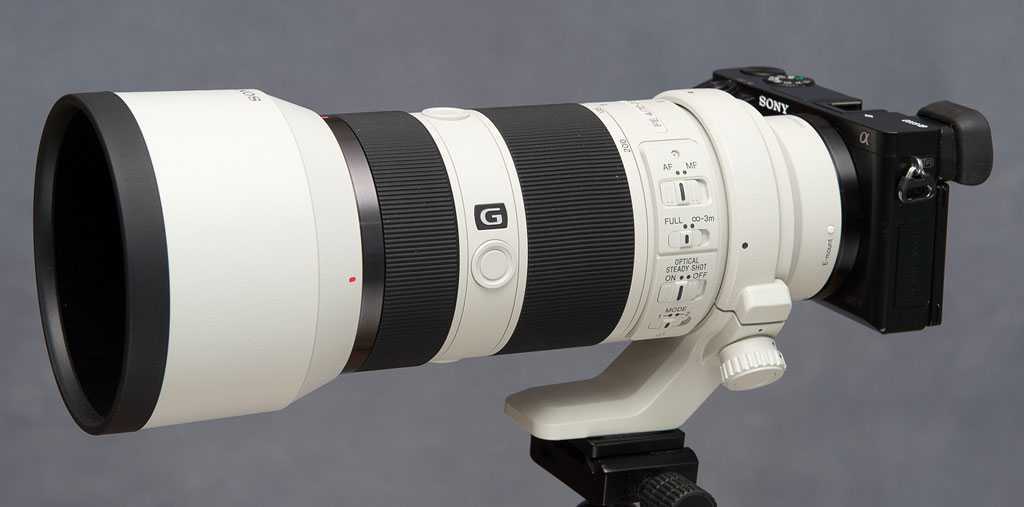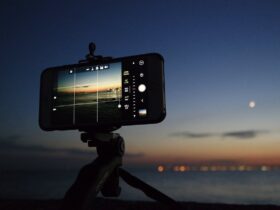This article analyzes the use of optics designed for full frame on bodies equipped with smaller and often denser sensors, presenting the theory that governs the resolution of lenses and practical considerations on choosing the lens that best meets the expectations of the amateur photographer. So why mount Full Frame lenses on APSC?
I often read advice from people who suggest mounting full frame lenses on APSC bodies. The purchase of lenses that cover the full frame would allow you not to find yourself redoing the kit once you have decided to evolve the kit by purchasing a full frame body.
Why mount Full Frame lenses on APSC?
Beyond the reasons that may lead to this change and that go beyond this article, I believe that this decision is often taken too superficially.
Leaving aside the economic discourse, certainly too personal to be able to deal with it in an article, the use of a full frame lens on an APSC body brings with it a number of considerations, some obvious, others less so, which deserve to be taken up in more detail to make a more thoughtful choice.
- Full frame lenses are very often more expensive than their APSC equivalents
- Full frame lenses are very often heavier than the APSC equivalent
- The optical performance of a full frame lens on an APSC body is different from that of a full frame body
The first two points are certainly evident, since the full frame lens has to cover a larger focal plane than the APSC one, this leads to the need to have larger dimensions to control aberrations, and consequently higher prices. The third point, on the other hand, is much more complex and requires a technical / theoretical digression in order to be fully understood.
Mount Full Frame lenses on APSC: what happens
An aspect that often escapes the amateur photographer is the different resolution that different sensors impose on the lens. There megapixel rush it has in fact led to having sensors of smaller formats with a number of pixels similar to or higher than those of a full frame sensor. This basically means that a small size sensor will have smaller pixels than a full frame one.
Just think that the Sony full frame models named “R” (ie resolution) are from 42 MPx and have 4.5 um pixels in size, while a common machine The 24MPx APSC has a 3.9um pixel sensor. Although the microns may be small, this is a 15% variation, not to mention that many FF models have a sensor with a number of pixels comparable to that of smaller sensors, with more significant variations in pixel size and order up to 50%.
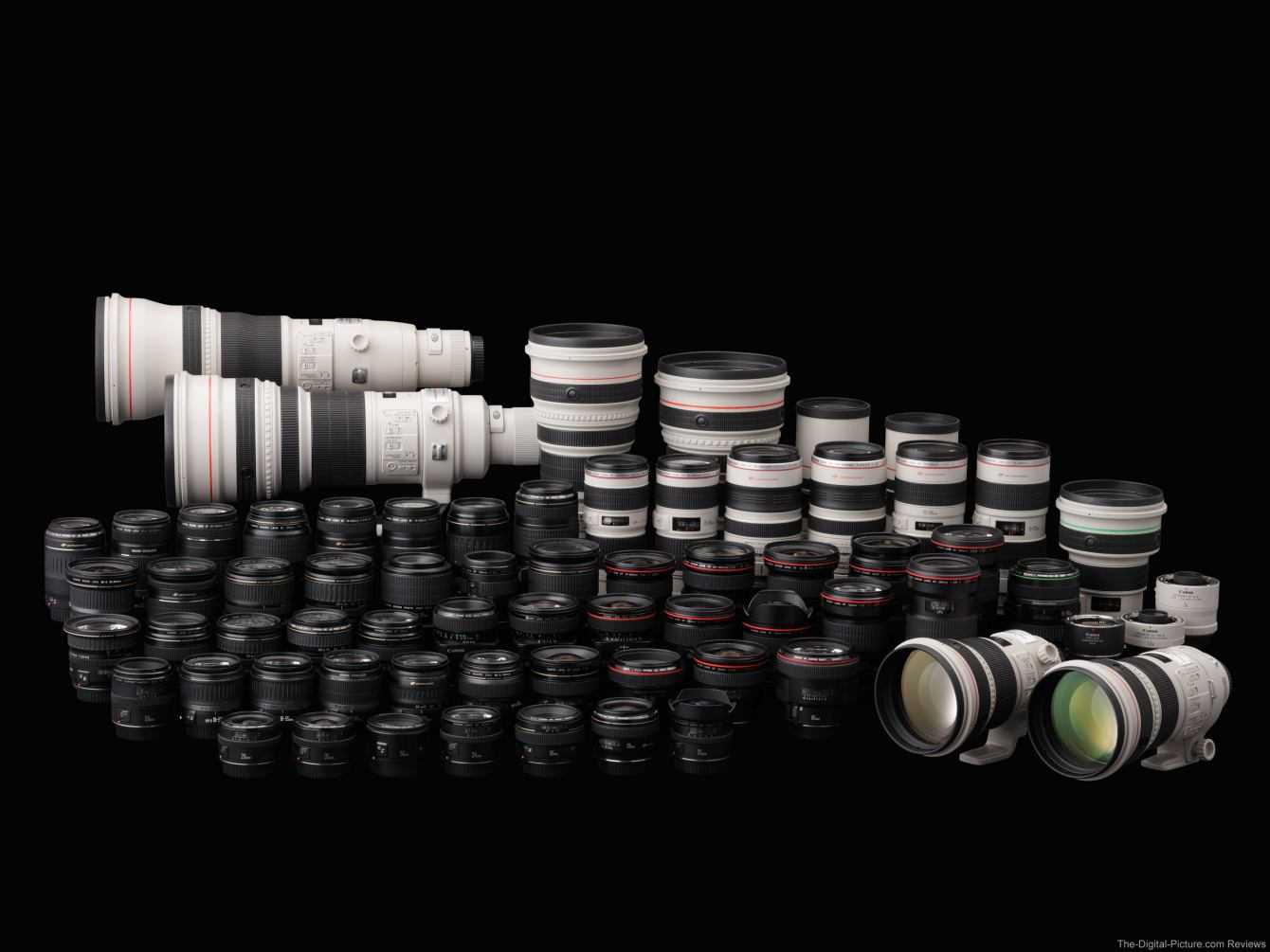
Some Canon lenses
Essentially, having a denser sensor means having the theoretical possibility of resolving finer details, but this if and only if the lens that illuminates it has such performance as to allow it. In optics, the ability of a device to produce an image of an extended object is measured with a function called MTF (modulation transfer function) which represents a real transfer function of the optical system. The MTF represents the contrast with which the system is able to transfer the different details, according to the size of the detail itself.
Mounting Full Frame lenses on APSC: another step
Suppose we have a subject made with a pair of lines of equal thickness, one white and one black: the MTF is the contrast with which this pair is reproduced in the image that our system creates. The lenses create images of extended objects, which we can represent as a series of black and white lines of different sizes combined together, (spatial frequencies, or lines / mm) that represent gradually finer details of our subjects.. The laws of physics tell us that the contrast (MTF) of any IDEAL optical system decreases as the spatial frequency increases.. A lens manufacturer can only try to make a piece with a behavior that is as similar to this as possible.
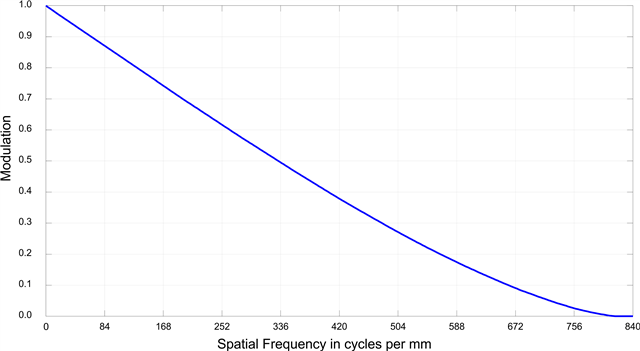
MTF curve example for an ideal defect-free optical system
At this point, however, it is necessary to go back to the photographic reality by going a little beyond the theoretical dissertation on MTF and to understand when these differences in yield become significant. Suppose we have recorded the MTF of a lens combined with a certain sensor. When the same lens is mounted on a body with a denser sensor, its yield will be lower than that on the less dense sensor because it is as if you were going to use a portion of the curve in the figure that is more displaced to the right than the starting one.
Mount Full Frame lenses on APSC: the return to reality
After this necessary parenthesis it is appropriate to make some considerations that bring us back to the photographic reality of the amateur photographer. First of all you need to keep in mind the destination of a shot: if you usually print large formats or review your shots on the monitor with magnifications of at least 50%, you will more easily notice a suboptimal yield of the lens. Conversely, if you usually print small formats, you will hardly notice the differences.
Obviously, in addition to the sensor and the relative pixel density you are using, the result depends on the single lens, so it is difficult to give general rules. For example, mine Minolta 35-70mm/4 I use for film shots, it doesn’t look good on the 24 MPx sensor of my Sony a6000. It did not even have problems with the 20mpx sensor of my Sony A58, but on 24 it restores images without detail and all mixed up.
Counting that the 20 MPx sensor has a pixel of 4.2um, the difference compared to the 24 Mpx sensor is less than 10% but corresponds to significant differences. This is probably because the MTF curve of this lens has a much steeper slope than the ideal curve in the figure and even small variations in spatial frequencies produce significant differences in yield. As proof that my eye is not too picky I carry both my dad’s OM2n Zuiko 28mm / 3.5 and 50mm / 1.8 perform excellently on my a6000.
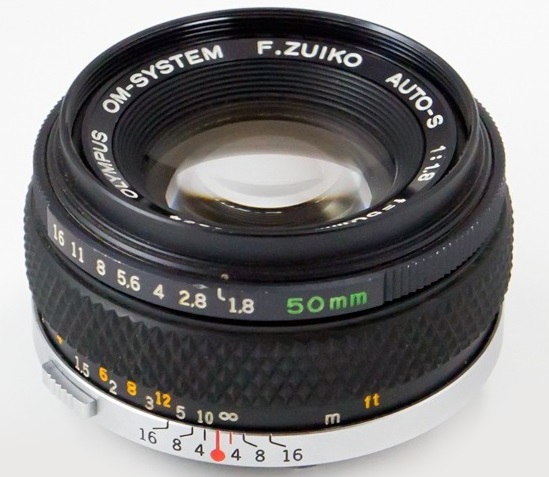
There is also a final point to consider: one thing is to define a good yield in absolute, another in relative: it is in fact much easier to distinguish differences from a sample that we consider satisfactory rather than to discern the absolute yield of a glass. Unless you have both a full-frame and a small-format body you will often not be able to realize the differences but only discern if the result of a photo of a given lens on a given body satisfies you.
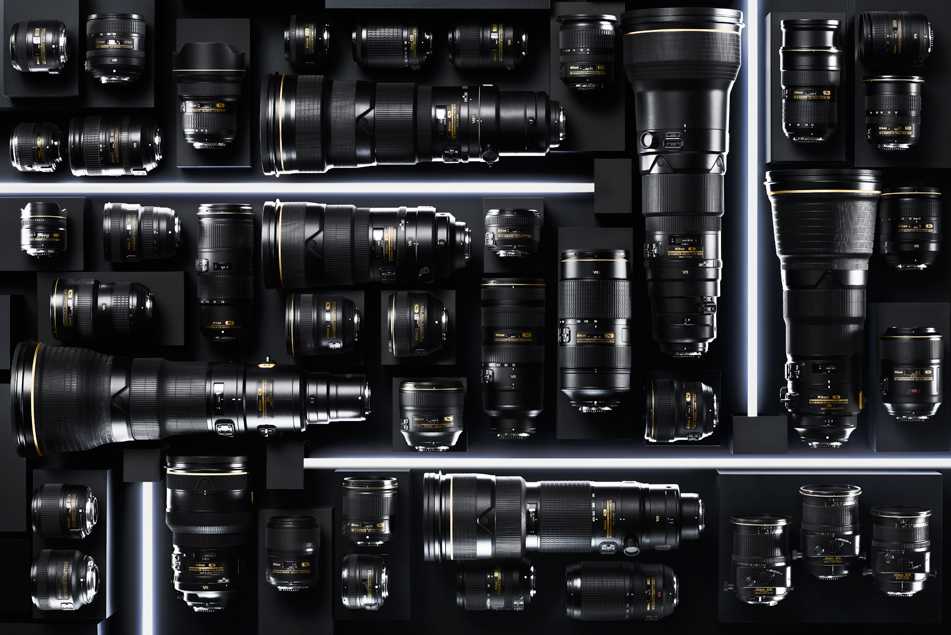
Some of the many NIKKOR optics
For this reason, as a general rule, I therefore always prefer to recommend purchase glasses dedicated to specific formats, to avoid the risk of encountering unwanted effects on your photos. If you want to mount an FF lens on a reduced size, I suggest you try the combination before buying it is absolutely not that the result will disappoint, especially by buying fine lenses albeit old, or modern lenses, which in some cases represent the only possibilities. to cover certain focal lengths not having corresponded on a single format, such as often happens for telephoto lenses. What do you think about it? let us know in the comments and keep following us for other news always on techgameworld.com!







